Please read the lesson material below and answer the questions for the lesson. Don't forget to include your contact information so we can review your answers and respond to your comments or questions. If you make at least 60%, you should continue onto the next lesson. Otherwise, please review the material and try again. You need to average at least 70% to pass the course. We will contact you via email within a few days of receiving your answers.
Jesus: Man of the Bible
Lesson 1
The Most Amazing Book Ever Written!
Of all the books ever written the Bible stands out as the king, and this is not for religious reasons alone. Consider the following.
- The Bible has consistently been the best selling book year after year.
- The Bible has been translated into more languages than any other book in existence.
- More reference and commentary books have been made for the Bible than for any other book.
- Historically, no other book has stirred up as much controversy as the Bible. Over the past 2,000 years, hundreds of thousands of people have died because of its contents!

Endless reference books!
Even in our time today there is still much controversy surrounding the Bible. Worldwide, hundreds, if not thousands, of different Christian groups claim the Bible as their guide! From its pages, these groups get their individual teachings and practices. When they are asked to defend their teachings, they debate one another hurling passages and interpretations from the Bible in support of their own church against all others. With all the confusion in the religious world today, it should not surprise us if we find it difficult to determine religious TRUTH.
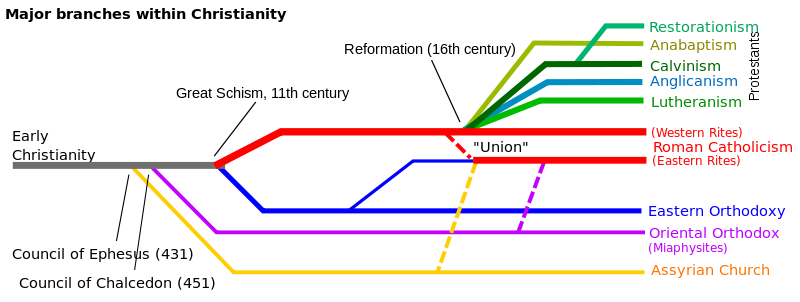
The Major Branches of Christianity, but there are thousand of smaller ones!
However, our effort to find TRUTH does not have to end in frustration. There IS an answer! God gave a very special book to mankind to act as a guide to lead him out of confusion and into the light of understanding! That guide is the Bible and it was written so that any person who wants to can read and understand what it has to say and discover the TRUTH that is inside. Because of this, and because of all the confusion in the religious world around us, EVERYONE needs to learn to study the Bible for himself or herself. We at the Bible Study Center believe this very strongly. Not only do we want to help you find answers to your questions, but also we truly want to help you learn HOW TO STUDY THE BIBLE FOR YOURSELF. With this thought in mind, we will now begin a journey together. It will be a journey with many challenges, but also one with many rewards! Having gone there before you, we promise that you will not be disappointed!
A short history of the Bible
Have you ever wondered why the Bible is called the “Bible”? You may not know it but we cannot find the word “Bible” in the verses that are found inside the English Bible! However, it is called “the Bible” for a good reason. The word “BIBLE” actually comes from a foreign language. It originally comes from the Greek word “βίβλια” (pronounced “bib-li-a” in English). If we translate this word into English it means “books”. Using this word as a title fits very well because the Bible is not only one book, but actually a whole library of books.
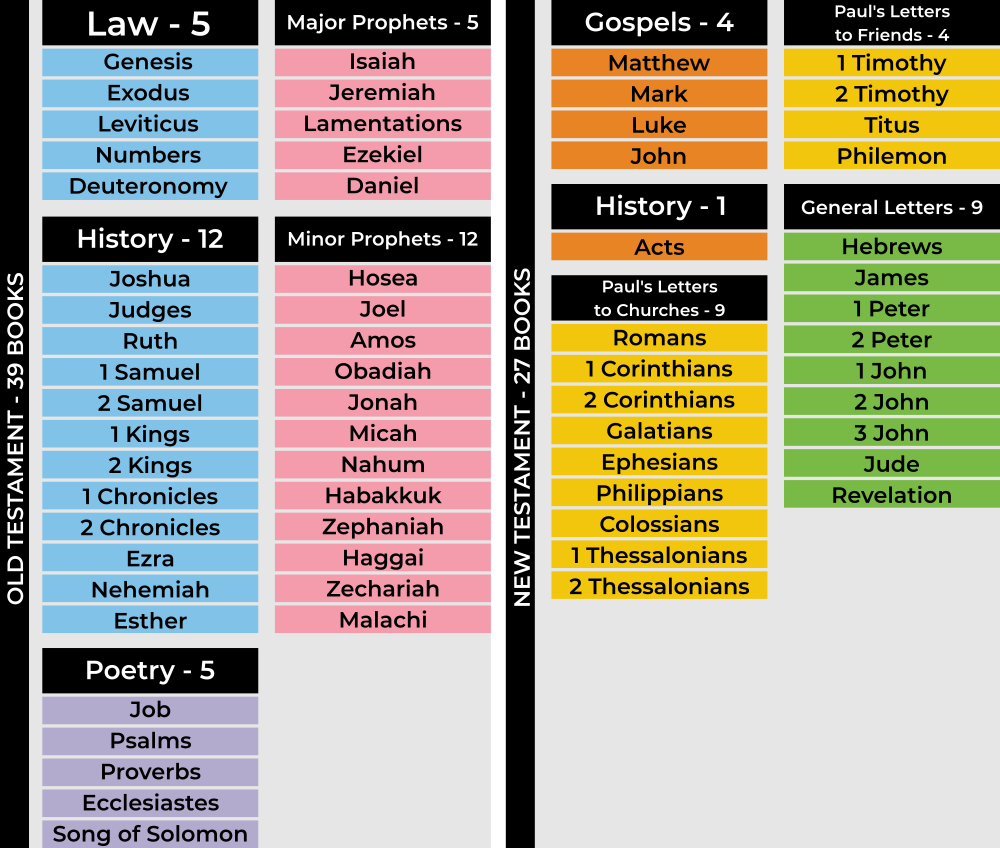
The Bible contains 66 books and is divided into two sections, or “testaments” as they are often called. There are 39 books in the portion of the Bible called the Old Testament and there are 27 books in the portion called the New Testament.
The history of the Bible is filled with many foreign languages and it should not surprise you to discover that the Bible was not originally written in English! In fact, each of the “testaments” was written in a different language. The Old Testament was written in the ancient Hebrew language, which was the native language of the Jewish people of whom most of the story of the Old Testament is about. The New Testament was written in the ancient Greek language, which was the “written language” of the Roman Empire during the times in which the events recorded in the New Testament took place. It should also be noted that some passages of the New Testament contain words and phrases from the Aramaic language. Aramaic was a dialect of the Hebrew language and was spoken by the inhabitants of Palestine during the time of Jesus.
There is evidence indicating that somewhere around 40 different people wrote the different books of the Bible. However, it is difficult to arrive at an exact number because while some books contain the name of the writer, others do not. Evidence also indicates that a few books were written by several individuals working together while a few other books indicate that more than one person may have written their contents.
It took many years to complete the writing of all the books of the Bible. From the time when the first book was written (the book of Genesis) until the time when the last book was written (the book of Revelation) might have been as long as 1,500 years or more! The Old Testament was completed first. Even before Jesus lived on the earth, it was already finished and in the same basic form that we have today! The collection of books we call the New Testament was completed about a hundred years or so after Jesus left the earth.
Yes, the history of the Bible is a very interesting picture when you consider that there were periods of time when several of the books were being written at the same time and yet it is possible that the authors of those books never met each another. It is even possible that they never even knew the other authors were alive, and yet when a comparison is made of their individual writings, the similarities between those writings are so clear that one might think the writers had been sitting together in the same room and working together!
When we consider all of these things, the Bible really is a very special book. There were so many people involved, spanning so many years, in so many places and languages, and yet there are no contradictions in its message. That is an amazing thing indeed!
A short history of writing
Another interesting area that has a very great effect upon the Bible is the history of WRITING. Writing has not always been the same as the way we know it today. It has undergone many changes, which began some 6,000-8,000 years ago and it continues to change even today!
The earliest known kind of writing was very different from our modern day “alphabet”. During those ancient times, people used PICTURES that they arranged in a certain order to communicate messages to each other. This type of writing is called pictography or “picture writing”. This is still a common form of communication for non-literate cultures in many parts of the world and can be quite useful for things like warning signs. But this type of writing makes it difficult or impossible to fully express a spoken language, so systems like Egyptian heiroglyphics, Sumerian cuneiform, and Chinese characters were developed where the symbols could represent certain sounds or ideas in addition to the image itself.
Sometime around the year 2000 BC, a form of writing was developed using simplified “letter characters” called an alphabet.1 In an alphabet, each character only represents a sound. The letters can be combined to represent every word in the language exactly as it would be spoken. Most languages from that time onward have been based on this or a similar form of writing.
A short history of writing materials
The subject of WRITING MATERIALS has also had a major effect upon the history of the Bible. Today, we take for granted the fact that we can go to a store and purchase a piece of paper and a pen to write with, but it has not always been so easy!
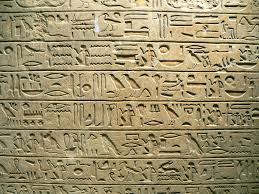
During the earliest years of human civilization, writing was done on STONE, which would usually be carved with a hammer and chisel. Sometimes people would write on stone with paints and inks made from crushing colored stones or from the colored juices of different plants. (You might recall that the original 10 Commandments of the Old Testament were written on stone tablets!) WOOD was also a common and abundant early writing material.
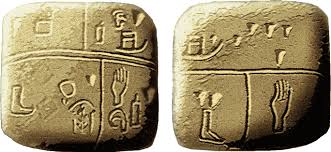
CLAY tablets were also very common in ancient times. Wet clay would be gathered and shaped into small square plates. A message could then be written on the clay “tablet” with an instrument very similar to our pencil, which was called a stylus. The clay tablet would then be dried in the sun or baked in an oven until it became as hard as a rock. These tablets were very durable and many ancient libraries of these clay tablets have been discovered in our time.
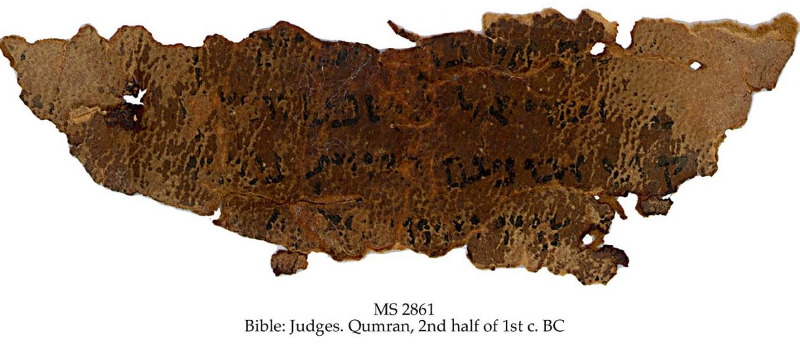
Later in history, came the use of LEATHER as a writing material. The leather would be cut into long narrow sheets and rolled upon a stick to form a scroll. This was a very important development because the leather was very durable and could hold much more information than a clay tablet. It was also much more convenient to store and transport leather scrolls than it was pieces of wood, or stone, or clay tablets. (The ancient laws of Israel were kept on leather scrolls.)
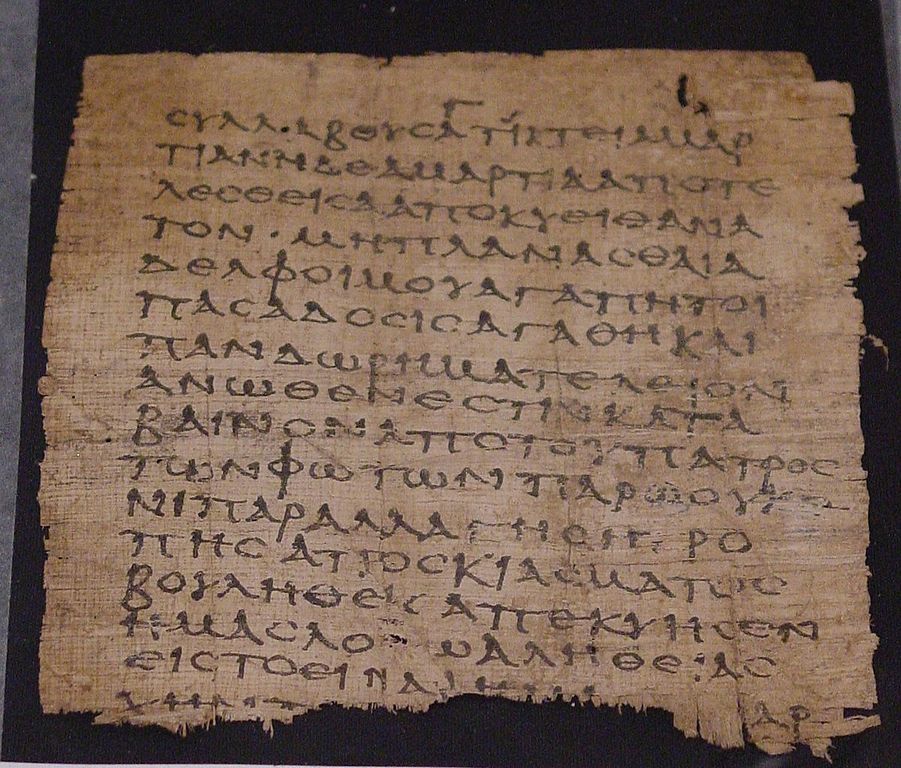
Another very important ancient writing material was PAPYRUS, which was made from the stems of the papyrus plant, a tall grass that grew beside many rivers throughout the Bible lands. The long stems would be shaved into thin layers that would be woven together like a mat and then pressed and dried in the sun. These dried sheets would then be cut and wound into scrolls. Papyrus sheets could even be washed and reused again. This material was the most widely used writing material in the time of Jesus and it is very likely that the original copies of the books of the New Testament were written on this material.
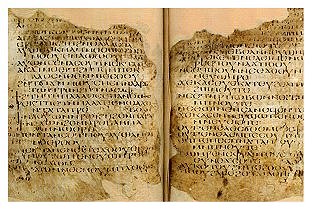
After papyrus, the next major writing material to be discovered and used was PARCHMENT, or VELLUM as it was sometimes called. This material was made from animal skins, but it was different from the leather mentioned earlier. These animal skins were scraped until they were very thin and then they were bleached so that they became very white. Even though parchment was used to make scrolls, like leather and papyrus, it was the first major writing material used in the making of the first “books,” where people would cut long scrolls into pages of the same size and then sew them together along one side. (The oldest surviving copies of the complete Bible that we have in existence today were written on parchment!)
Our modern form of PAPER did not come into existence until about the 14th century AD, which was only about 700 years ago! If you consider the thousands of years mentioned in this section, paper has only been around for a very short time!
What can we expect to see happen to writing materials in the future? There was a time when people thought papyrus would be the writing material for all time, and then there came parchment! We now use paper, but will paper continue to be a writing material until the end of time? Right now, the world is moving closer and closer to a world without paper, switching instead to electronic writing on computers! It is now possible to purchase the Bible in an “electronic book” format on a computer and carry it with you on a small device that fits into a pocket or purse. Is this the future of printing? Who knows, but you can be certain that the Bible will be there whatever the future holds!
A short history of books
Aside from writing systems and materials, the COPYING OF INFORMATION has also had a great impact upon the Bible. Imagine how slow things would be done in our world today if we did not have copying machines, printing presses, and computers! How did the people of ancient times copy their documents? Until a few hundred years ago, ancient copies of any document had to be done by hand.
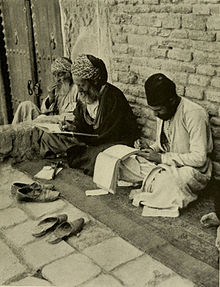
A professional copyist, called a “scribe”, would be paid to spend days, months, or even years making handwritten copies of original documents. This was long and frustrating work and it was expensive. A book the size of the Bible might take two or three years to complete and might cost one years’ wages in today’s money! We are very fortunate to live in a time when we are able to purchase a copy of the Bible, or any book for that matter, for such a small price!
Early copying was not without its problems too. While time was the greatest obstacle, sometimes the scribes were able to overcome the problem by using a technique involving what became know as a “scriptorium”, which was a special room where a group of scribes would gather to make multiple copies of a document at the same time.

Instead of working individually, they would let one person read aloud the original text while the rest of the group would listen and write down what was read. While this was considered a great advancement during those ancient times, the number of copies that could be made was still far less than what is demanded in our time. It is truly a good thing that we live in such an advanced age!
How modern Bibles are made
Many students are curious to know how our modern translations of the Bible are made. The advancement of writing methods, materials, and books has had a great impact upon the history of Bible translations. The original copies of the Bible books were most likely written on papyrus scrolls and early copies were made by hand. Since papyrus was not very durable, we no longer have any of the original copies of the Bible books. In fact, the earliest surviving complete copy of the entire Bible we have with us today is written on parchment and dates back to about 300 years after Jesus died and went back to heaven! However, we do have some small papyrus fragments of individual books that might date back to as early as 100 years after Jesus left!
The people who make our Bibles today try very hard to give us the most accurate copies possible by following a careful procedure. A group of specially trained scholars collects all of the ancient pieces and fragments of Bible books together in one place. Then they compare all the wordings of the verses and create a complete copy of each Bible book in its original language. They do this for each of the two portions of the Bible. The result of their work is a special kind of Bible called a “translation text”. The translators of our Bibles then use this text when they translate the Bibles we find on sale in bookstores. Most of the Bibles we have available today are the work of groups of translators, who work in groups in order to minimize the possibility of one person making translation mistakes or of including their own personal religious opinions in the translation.
Science has made very important contributions to our modern Bibles, especially the science of Archeology. Archeology is the study of the ancient past and Archaeologists have traveled all over the world digging in the ruins of ancient civilizations. As time passes, Archaeologists who focus upon studying places mentioned in the Bible sometimes find new pieces of ancient copies of the Bible and any significant discoveries regarding the text of the Bible are then added into the “translation text”. This helps to make certain that new translations of the Bibles will be more and more accurate!
Aside from the discovery of new Archaeological evidence, it is often necessary to make new translations of the Bible because of changes in the languages into which the Bible has been translated. We know that in any language words often change meaning as the years go by. New Bible translations are made, and older ones are revised, in order to make certain that the original thoughts contained in the ancient Bible are translated into accurate words of the languages of today. If this were not done then it might be possible that, over a long enough period, the words used by translators of the Bible in one generation might change to mean something completely different, or perhaps even the opposite, in a future time! Can you imagine how dangerous that would be? Just think for a moment. What would happen if the words “white” and “black” were to exchange their meanings, or perhaps the words “stop” and “go”?
Which Bible is the best one to use?
This is a very common question asked by students at this point. It is not an easy question to answer because there are several factors to consider. First, it must be understood that every Bible translation contains mistakes! Inside practically any kind of Bible you read, there will be portions of it that are 100% accurate, but there will also be portions that will be questionable or perhaps even translated incorrectly! The simple fact is that there is no such thing as a “perfect Bible translation”. The first thing students should do is find a translation which is based upon the original languages and uses the most up-to-date “translation text.” In addition, find one that was translated by a group of people who come from a variety of religious groups as this will help to ensure that the translation will have a certain degree of objectivity and accuracy.
Another factor in determining a good translation is the vocabulary used in wording the translation. A translation that uses a more “formal” vocabulary will contain words and phrases that may be difficult to understand. What good is an “accurate” translation if the ones using it cannot easily understand what they are reading? Finding a translation that is easy to understand and, at the same time, accurate can be a difficult task!
The best way for anyone to overcome these many difficulties is to use several different kinds of Bibles. Make comparison for each passage. The differences in the way the different translators worded their sentences can help you better understand what you are reading. In addition, the use of different translations (which were made by different groups of translators with different religious backgrounds) will help to ensure that you are getting an unbiased view of what the Bible says!
This ends our introduction to the Bible. In our next lesson, we will ask the Bible some questions about itself and let the verses provide us with the answers. (That will be fun!)
Footnotes
1 Some people believe that the word “alphabet” comes from the Hebrew language. The first character of that language is called “aleph” and the second is called “bet”.
